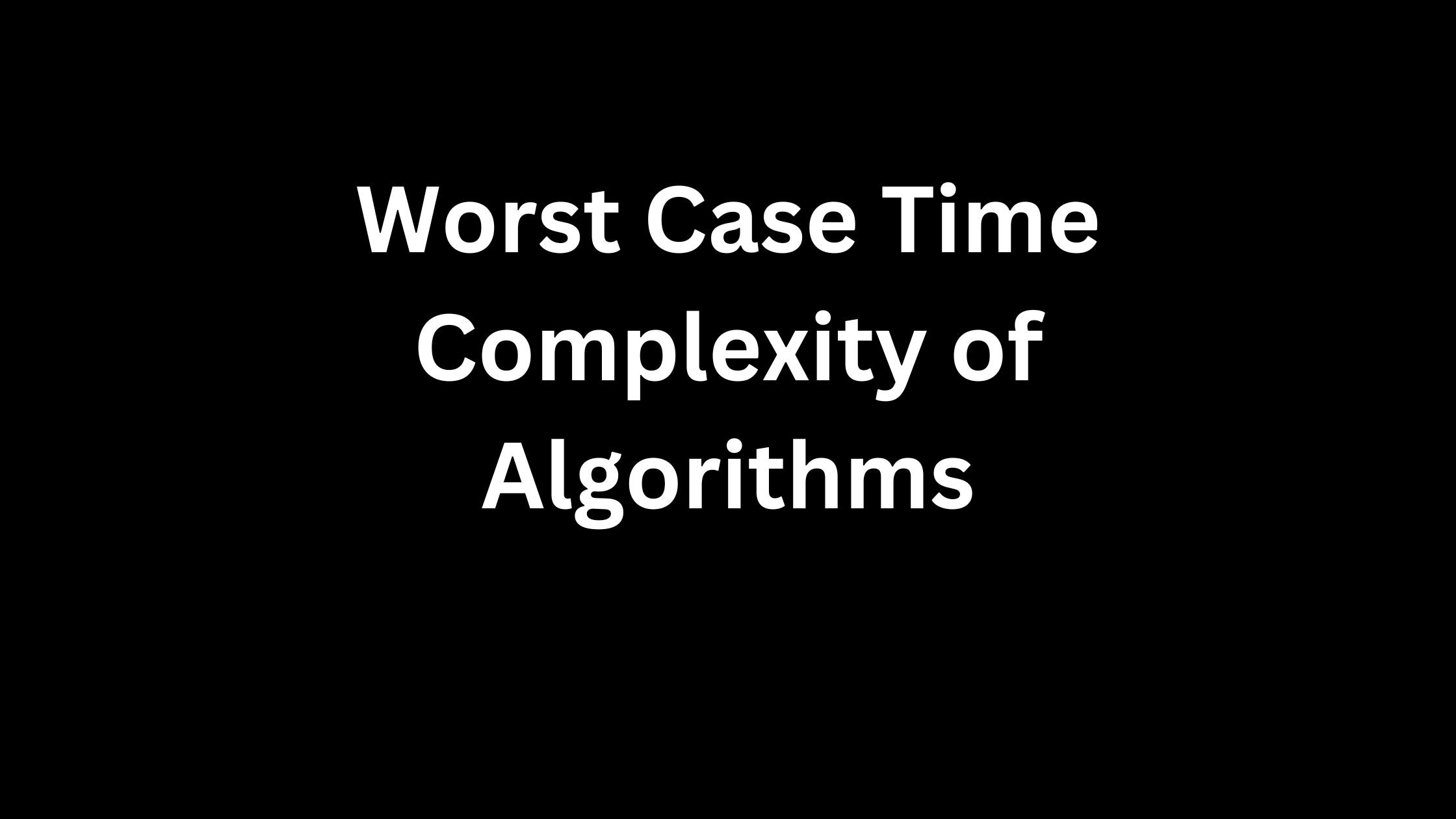Worst Case Time Complexity of Algorithms
 Sawan Kumar Jha
Sawan Kumar Jha
Data Structures:
Array: Access O(1), Search O(n), Insertion O(n), Deletion O(n)
Linked List: Access O(n), Search O(n), Insertion O(1), Deletion O(1)
Stack: Access O(n), Search O(n), Insertion O(1), Deletion O(1)
Queue: Access O(n), Search O(n), Insertion O(1), Deletion O(1)
Binary Search Tree: Access O(log n), Search O(log n), Insertion O(log n), Deletion O(log n)
Heap: Access O(1), Search O(n), Insertion O(log n), Deletion O(log n)
Hash Table: Access O(1), Search O(1), Insertion O(1), Deletion O(1)
Algorithms:
Linear Search: O(n)
Binary Search: O(log n)
Bubble Sort: O(n^2)
Selection Sort: O(n^2)
Insertion Sort: O(n^2)
Quick Sort: O(n log n) average case, O(n^2) worst case
Merge Sort: O(n log n)
Heap Sort: O(n log n)
Counting Sort: O(n + k), where k is the range of the input
Radix Sort: O(d(n+k)), where d is the number of digits in the maximum number and k is the range of the input
Breadth-First Search: O(V + E), where V is the number of vertices and E is the number of edges in the graph
Depth-First Search: O(V + E), where V is the number of vertices and E is the number of edges in the graph
Dijkstra's Algorithm: O((V+E) log V), where V is the number of vertices and E is the number of edges in the graph
Bellman-Ford Algorithm: O(VE), where V is the number of vertices and E is the number of edges in the graph
Floyd-Warshall Algorithm: O(V^3), where V is the number of vertices in the graph
Note that these time complexities represent the worst-case scenario, and actual running times may vary depending on factors such as input size and data distribution.
Subscribe to my newsletter
Read articles from Sawan Kumar Jha directly inside your inbox. Subscribe to the newsletter, and don't miss out.
Written by

Sawan Kumar Jha
Sawan Kumar Jha
Hi there, this is Sawan Kumar Jha a Tech Enthusiastic